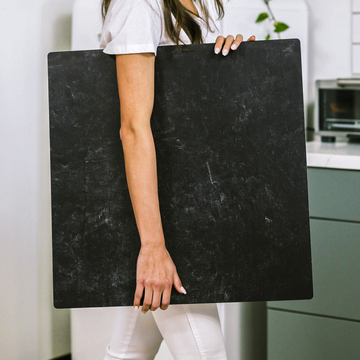Wood backdrops are a staple in product photography, but most people think only about rustic charm or color matching. There’s a rich science behind wood surfaces that, when understood, can add depth, emotion, and polish to your product shots. In this post, I’ll shine a light on the subtle ways grain, finish, and lighting combine to create images that truly stand out.
Wood Grain: The Unsung Hero of Composition
The direction of the wood grain is not just a detail-it’s a powerful tool for shaping how viewers experience your product.
- Vertical grain makes products look taller and more elegant. Perfect for mugs, bottles, or anything you wish to elongate visually.
- Horizontal grain widens the frame, grounding plates or trays and making them feel substantial.
- Diagonal grain adds movement and energy to your photos by drawing the eye along a subtle path.
Next time you’re styling your shoot, try rotating your board and see how your product’s vibe shifts with the grain-it’s surprisingly effective.
Finish Matters: Matte vs. Glossy Reality
Most advice around finish stops at “gloss makes glare.” But there’s more. The surface’s finish quietly affects color, mood, and brand perception.
- Matte finishes scatter light, producing even, glare-free shots with true and subtle colors. They’re the safe bet for most brands seeking authenticity.
- Satin (or eggshell) finishes offer the best of both worlds-soft highlights and a sense of depth without overpowering shine.
- Glossy finishes pump up contrast and add drama, making them perfect for modern or high-end brands. Just be aware: bright reflections can sometimes tweak your product’s colors, so always test under your usual lighting.
Lighting Angle: Small Changes, Big Impact
The direction of your lighting in relation to the wood grain can completely transform the character of a photo.
- Top-down, soft light reduces the wood’s presence, creating a clean, neutral background that lets your product shine.
- Low, angled “raking” light emphasizes texture, bringing out every line in the grain-ideal for cozy artisan shots.
- Side lighting can magnify drama and highlight both product and surface, but watch out for unwanted reflections with glossy finishes.
Experiment with your setup: a simple adjustment in angle can breathe new life into a familiar surface.
The Polarizer Trick: Fine-Tuning Reflection Like a Pro
Most creators overlook this, but using a polarizing filter (either on your lens or light source) gives you precision control over glare. You can tone down shine for a luxurious, matte look or intensify highlights to emphasize certain features. If you want your surfaces to look exactly how you imagine, a polarizer is your secret weapon.
Influencing Perception: The Psychology of Wood
Each choice-grain, finish, lighting-does more than just change how a picture looks. It sends a message to your customer about your brand and product. Consider these subtle cues:
- Matte, fine-grained wood suggests craftsmanship, honesty, and care.
- Glossy, dramatic wood signals luxury, design, and modernity.
- Bold, visible grain tells a story of nature, warmth, and authenticity.
Think about the story you want your backgrounds to tell before setting up your next shot.
Try This at Home: Quick Setup Exercise
- Pick your favorite wood backdrop.
- Place your hero product on it.
- Rotate the grain (vertical, horizontal, diagonal) and shoot each way.
- Switch between matte and glossy if you have both.
- Experiment with lighting angles-top, side, and low.
Compare your shots. You’ll see how each micro-adjustment changes the feeling, color, and perceived value of both your product and your brand.
Final Thoughts: Make Your Surface Do the Storytelling
A wood backdrop is so much more than a pretty prop-it’s a creative partner. By mastering the interplay between grain, finish, and light, you’ll unlock your ability to style, brand, and sell with confidence. Every photo is a chance to tell a richer story. So take a little extra time on your next shoot to let your surface shine in its own unique way. You-and your customers-will notice the difference.



